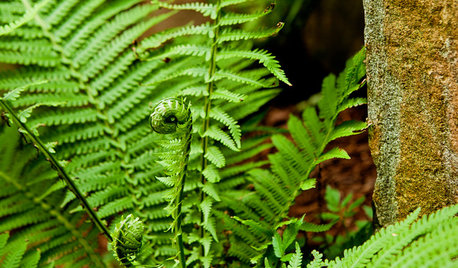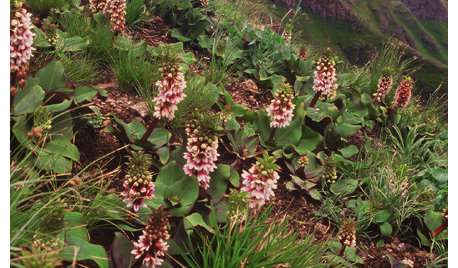Name of a fern that grows in the south
debbiep_gw
14 years ago
Related Stories

GARDENING GUIDESGreat Design Plant: Ostrich Fern (Matteuccia struthiopteris)
Try this giant among ferns for a showstopping sight in a shady or even somewhat sunny woodland garden
Full Story
FERNSThe Indoor Gardener: Reconsider Fabulous Ferns
Delicate to exuberant, ferns come in all manner of styles and add bursts of freshness to your interior decorating
Full Story
GARDENING GUIDESYes, You Can Grow Food in a Shady Yard
Your shady garden doesn’t have to be forever barren. Berries, herbs and other shade-loving plants can produce a delicious bounty
Full Story
FARM YOUR YARDHow to Grow Vegetables in Containers
Get glorious vegetables and fruits on your patio with a pro’s guidance — including his personal recipe for potting mix
Full Story
GARDENING GUIDESGreat Design Plant: Grow Blueberries for Their Fruit and More
Eastern gardeners should consider growing blueberry plants for their delicious fruits, bee-friendly spring blooms and brilliant fall foliage
Full Story
GARDENING GUIDES8 Plants That Snobs Love to Hate — and You'll Love to Grow
Don't dismiss these common annuals, perennials and shrubs — there are reasons they've been popular for so long
Full Story
EARTH DAYGrow a Beautiful Garden With Ecofriendly Greywater
Reducing home water waste means lower bills and a healthier planet. Here's how to set up a greywater home irrigation system that can help
Full Story
SPRING GARDENINGSummer Crops: How to Grow Strawberries
Pluck your own sweet strawberries right from the garden vine for smoothies, salads or eating then and there
Full Story
DECORATING GUIDESTravel Takeaways: Design Inspiration From the South Pacific
Samoa’s freely flowing tropical beauty offers decorating lessons on color, texture and being inspired by nature
Full Story
GARDENING GUIDES3 Exotic Flowers From the South African Wild
Add an enticing note to a garden border or patio container with these sophisticated and memorable African plants
Full Story





Iris GW
debbiep_gwOriginal Author
Related Professionals
Athens Landscape Contractors · Canby Landscape Contractors · Lyndhurst Landscape Contractors · Oklahoma City Landscape Contractors · Paso Robles Landscape Contractors · Streamwood Landscape Contractors · 07920 Landscape Contractors · Ansonia Landscape Contractors · Columbia Fence Contractors · Candler-McAfee Fence Contractors · Cherry Hill Fence Contractors · Leesburg Fence Contractors · Madison Fence Contractors · Owings Mills Fence Contractors · Sacramento Window Contractorsgirlgroupgirl
vroomp
razorback33
debbiep_gwOriginal Author
vroomp
bagsmom
Iris GW
debbiep_gwOriginal Author
vroomp
vroomp
Iris GW
ladywindsurfer
Iris GW
vroomp
gusolie